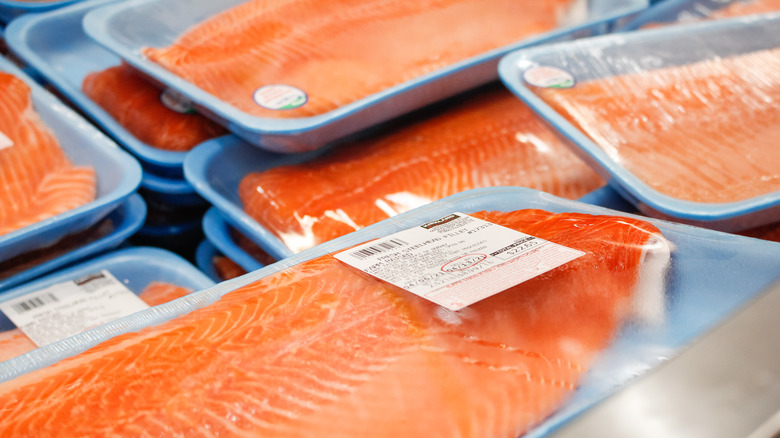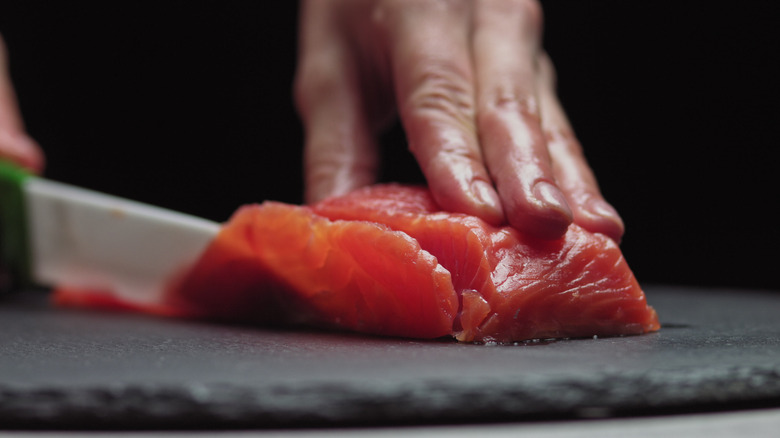Please Do Not Eat Costco's Salmon Raw
As most of us are well aware by now, not everything you see on TikTok is necessarily going to be good advice. For one thing, Tide Pods are not food! For another, cooking steak in a toaster is a really, really bad idea. We now have one more piece of advice to debunk: Contrary to claims made by one TikToker, no, you probably shouldn't eat Costco's salmon without cooking it.
While the TikTok video itself no longer appears to be up on the site, it pretty much consisted of a young woman extolling Costco salmon as a great budget alternative to sushi-grade salmon. Commenters, however, were skeptical of the claims; and it seems they may have been right to do so. In a follow-up video entitled "food poisoning vlog," the woman says she's been vomiting and having severe diarrhea and body aches for two days and admits that the raw salmon may have been responsible for her condition.
In fairness to Costco, though, it does not seem that the retailer advertised the salmon as being safe for raw consumption. Nor do we have any proof that the fish was, in fact, the cause of her illness. While we'd have no hesitation to buy Costco salmon ourselves, we'd definitely want to cook it.
So, how can you find salmon that's safe to eat raw?
Salmon that is labeled as either sushi- or sashimi-grade (the two terms are interchangeable) is something that is meant to be eaten raw. That being said, there are no actual rules in place to determine what makes fish sushi/sashimi grade. While wild-caught salmon must be frozen, this alone doesn't ensure its safety and freshness. Sushi-grade salmon must be flash-frozen immediately after being caught and proper safety precautions must also be put in place to make sure that it doesn't become contaminated en route from boat to store.
Any salmon you purchase, whether for eating raw or cooking, should be able to pass the "sniff test" — the FDA notes that fish that smells fishy (or sour, rancid, or ammonia-like) may be past its prime. Salmon intended for sushi should also be a bright pink color and feel firm, not squishy, when you poke it. It's also important to eat your fish ASAP. The USDA says that raw fish is only good in the fridge for two days, tops; and, even then, you should probably keep it on ice. If necessary, you can always re-freeze the salmon, although it won't have the best texture after you do so. The USDA also advises that you avoid eating raw fish altogether if you are in a high-risk group, meaning you are a child, an older person, pregnant, or immune-compromised.

